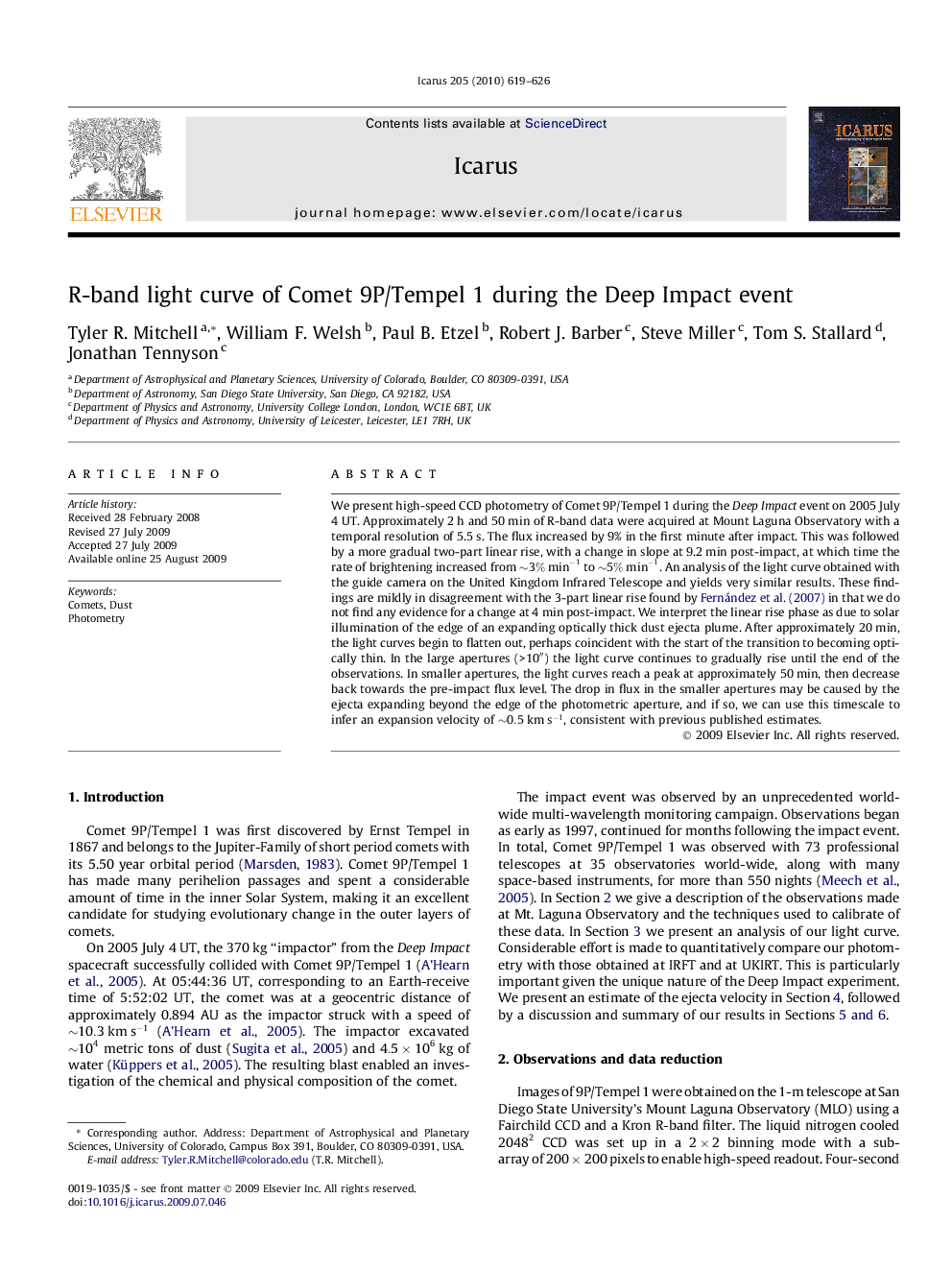| Article ID | Journal | Published Year | Pages | File Type |
|---|---|---|---|---|
| 1774244 | Icarus | 2010 | 8 Pages |
Abstract
We present high-speed CCD photometry of Comet 9P/Tempel 1 during the Deep Impact event on 2005 July 4 UT. Approximately 2Â h and 50Â min of R-band data were acquired at Mount Laguna Observatory with a temporal resolution of 5.5Â s. The flux increased by 9% in the first minute after impact. This was followed by a more gradual two-part linear rise, with a change in slope at 9.2Â min post-impact, at which time the rate of brightening increased from â¼3%min-1 to â¼5%min-1. An analysis of the light curve obtained with the guide camera on the United Kingdom Infrared Telescope and yields very similar results. These findings are mildly in disagreement with the 3-part linear rise found by Fernández et al. (2007) in that we do not find any evidence for a change at 4Â min post-impact. We interpret the linear rise phase as due to solar illumination of the edge of an expanding optically thick dust ejecta plume. After approximately 20Â min, the light curves begin to flatten out, perhaps coincident with the start of the transition to becoming optically thin. In the large apertures (>10â³) the light curve continues to gradually rise until the end of the observations. In smaller apertures, the light curves reach a peak at approximately 50Â min, then decrease back towards the pre-impact flux level. The drop in flux in the smaller apertures may be caused by the ejecta expanding beyond the edge of the photometric aperture, and if so, we can use this timescale to infer an expansion velocity of â¼0.5kms-1, consistent with previous published estimates.
Keywords
Related Topics
Physical Sciences and Engineering
Earth and Planetary Sciences
Space and Planetary Science
Authors
Tyler R. Mitchell, William F. Welsh, Paul B. Etzel, Robert J. Barber, Steve Miller, Tom S. Stallard, Jonathan Tennyson,
